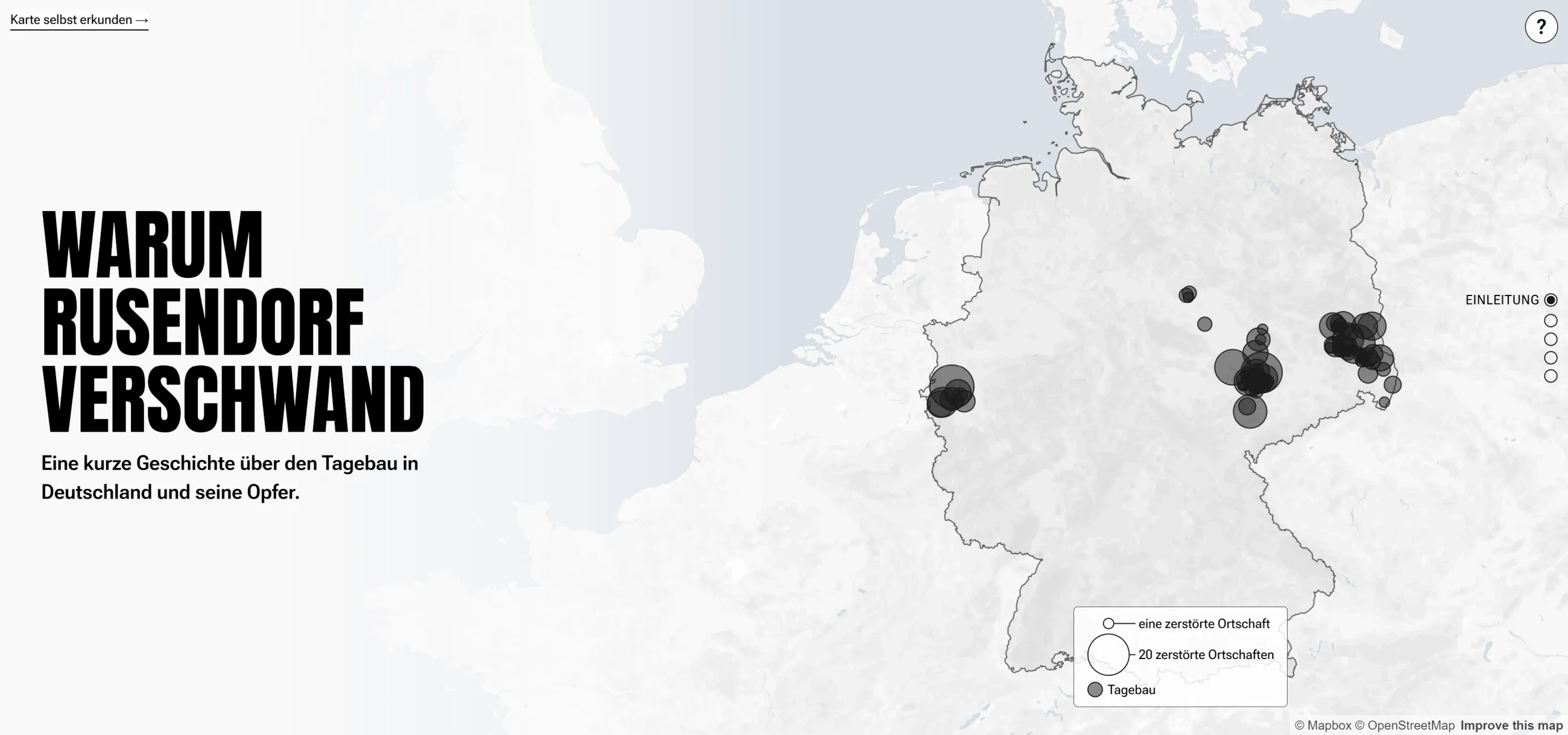Press release
Disappeared Villages: A Brief History of Open-Cast Mining

Since the end of the Second World War, over 300 villages in Germany have been demolished for lignite mining and over 120,000 people have been resettled. With the help of a data visualisation in scrollytelling format, interface design student Tim Hönig tells the story of German open-cast mining and makes the disappeared places visible again.
Hambach Forest and the nearby town of Lützerath became known worldwide as symbols of the climate movement. The forest and the town came into the spotlight because the coal beneath it was to be mined. Massive resistance developed against this – with success in the case of the Hambach Forest, which remains. The village of Lützerath, on the other hand, has been cleared in recent days amid massive protests from local residents and climate activists.
In the history of open-cast lignite mining, at least 78 open-cast mines have been built in Germany and villages have had to make way for them. The animated map "Verschwundene Ortschaften" (Disappeared Villages), which FHP student Tim Hönig created, visualises coal mining areas and villages that have disappeared or are under threat.
The visualisation focuses on three areas: The Rhenish coalfield in the city triangle of Aachen, Cologne and Mönchengladbach is now operated exclusively by RWE. The area includes the three large open-cast mines Garzweiler, Hambach and Inden, which are still active.
The first coal mine in Müncheln/Braunsbedra was established in the Central German lignite mining area as early as 1698. In total, over 120 villages were partially or completely mined here. Today, MIBRAG and ROMONTA still operate a total of three opencast mines.
The active opencast mines in the Lusatian mining district in south-east Brandenburg are operated by LEAG.
"I have been particularly interested in the topic of open-cast mining in Germany since the protests, occupation and eviction of Hambach Forest in 2019. By following the protests of 'Ende Gelände' and 'Alle Dörfer bleiben', I have learnt about the expropriation and resettlement of villages in this context. With my project, I want to tell a story about open-cast mining in Germany and make the destroyed villages visible with the help of an interactive map, " says Tim Hönig. He developed the concept, collected the necessary data and programmed the map visualisations. The scrollytelling format of the visualisation allows the villages to be embedded locally in their historical context.
The project "Verschwundene Ortschaften" was developed in the seminar "Karten der Macht. Macht der Karten" with Prof. Dr. Sebastian Meier, Professor for the Design of Knowledge Transfer at the Department of Design, in the summer semester 2022.
About the project: https://verschwundene-ortschaften.honigmitoe.de/
Concept, data preparation, design and programming by Tim Hönig